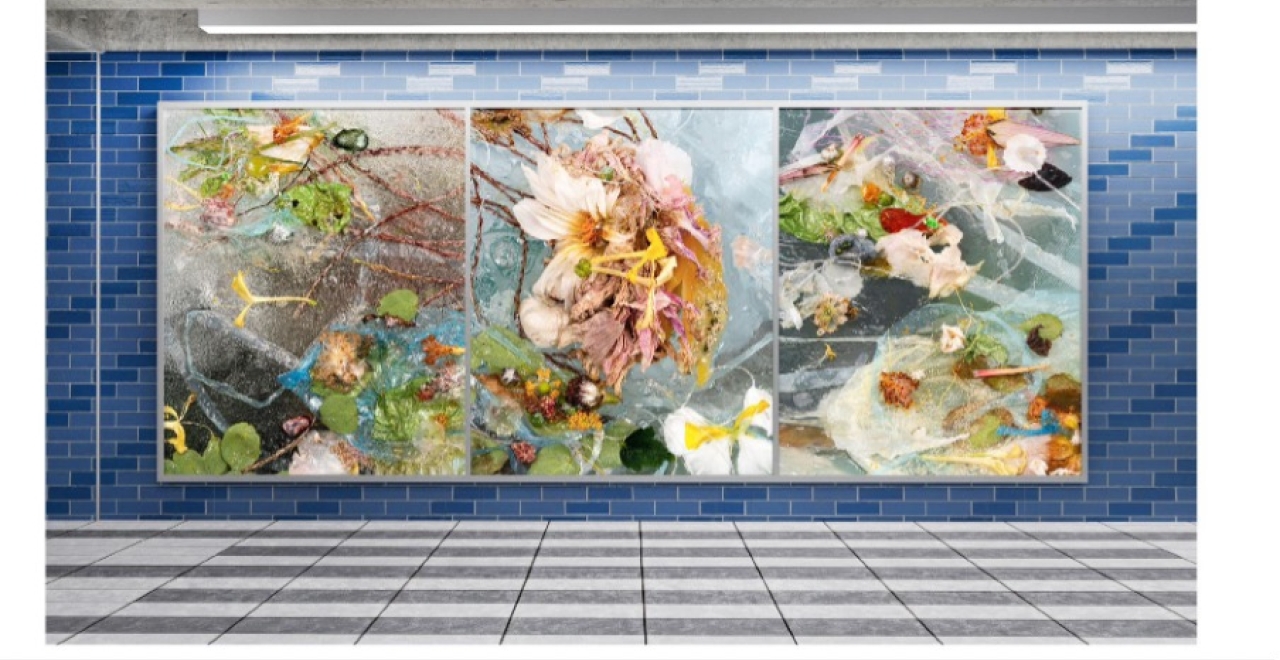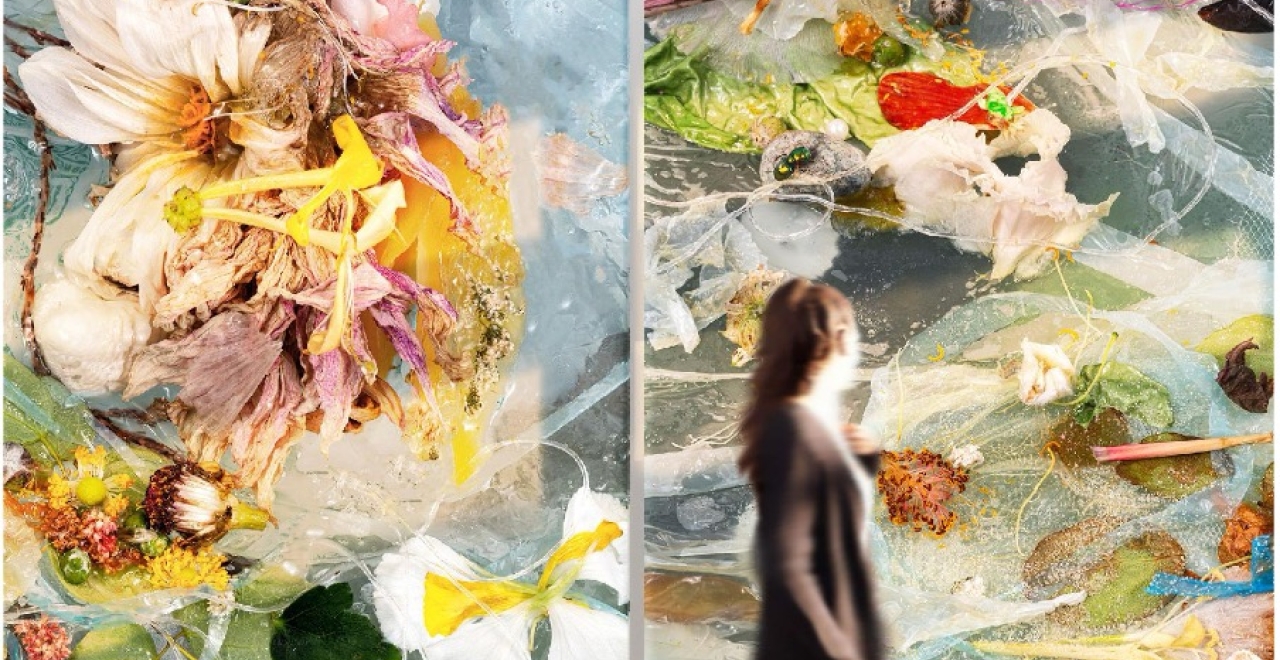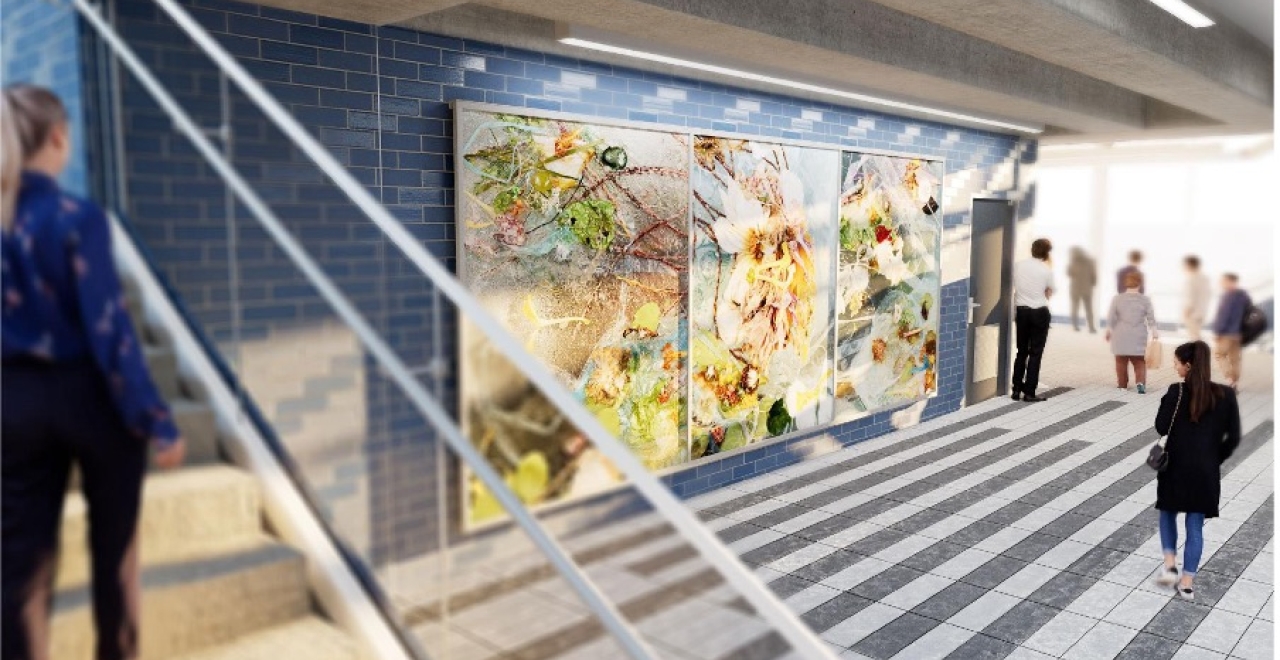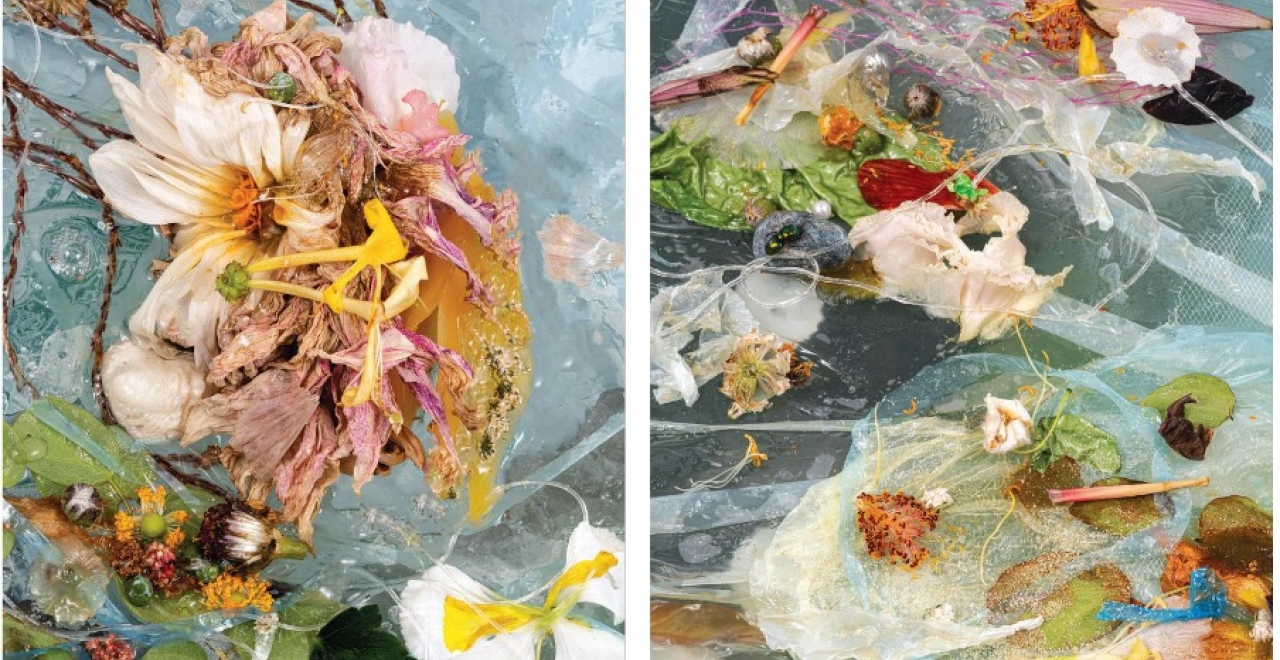Filets
Michelle Bui
Sainte-Dorothée Station
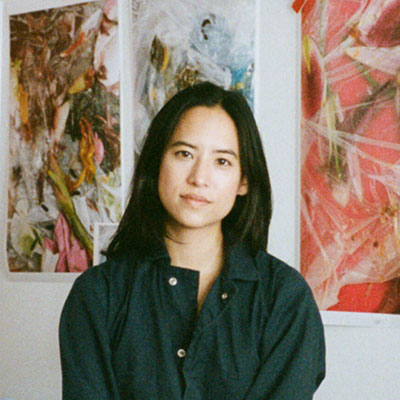 Portrait of Michelle Bui © Jill Schweber
Portrait of Michelle Bui © Jill Schweber
Artist: Michelle Bui
Michelle Bui is a visual artist trained in Montréal and Paris. Her works, exhibited across Canada and included in the collections of numerous institutions, stand out for the multisensory experience they offer the public. Through them, she probes our relationship with consumption and our connection with everyday objects.
About the work
Filets is a photographic triptych by Michelle Bui located in the Sainte-Dorothée REM Station.
Her vibrant work features seemingly arbitrary or mundane objects, gathered by chance encounters into a metaphorical net. These objects—botanical fragments and plastic materials—merge and reinvent themselves within it, forming a fluid, organic whole.
The work becomes the stage for a game of mimicry. Plastic bags take on the folds of rose petals. Insect bodies transform and gleam like pearls. Smooth, wet stones metamorphose into candies. Deflated balloons become iridescent water lilies. Every object, whatever its origin, becomes a vessel of poetry.
The net acts as an archive in perpetual transformation. Through its ability to change, it invites those passing through the station to reimagine what they see and to drift elsewhere—into a space where the familiar becomes foreign and the ephemeral becomes lasting.
“For the work Filets, I selected objects, materials and plant fragments—collected over the summer in my garden and back alleys. I wondered what place they might hold in 20, 50 or 75 years. Would they still exist or have already vanished? Thinking about how future generations will relate to these everyday things, I sought to reveal their capacity for wonder and poetry. Through this accumulation, the work evokes the small, often overlooked stories that weave together our daily lives in 2025.”

